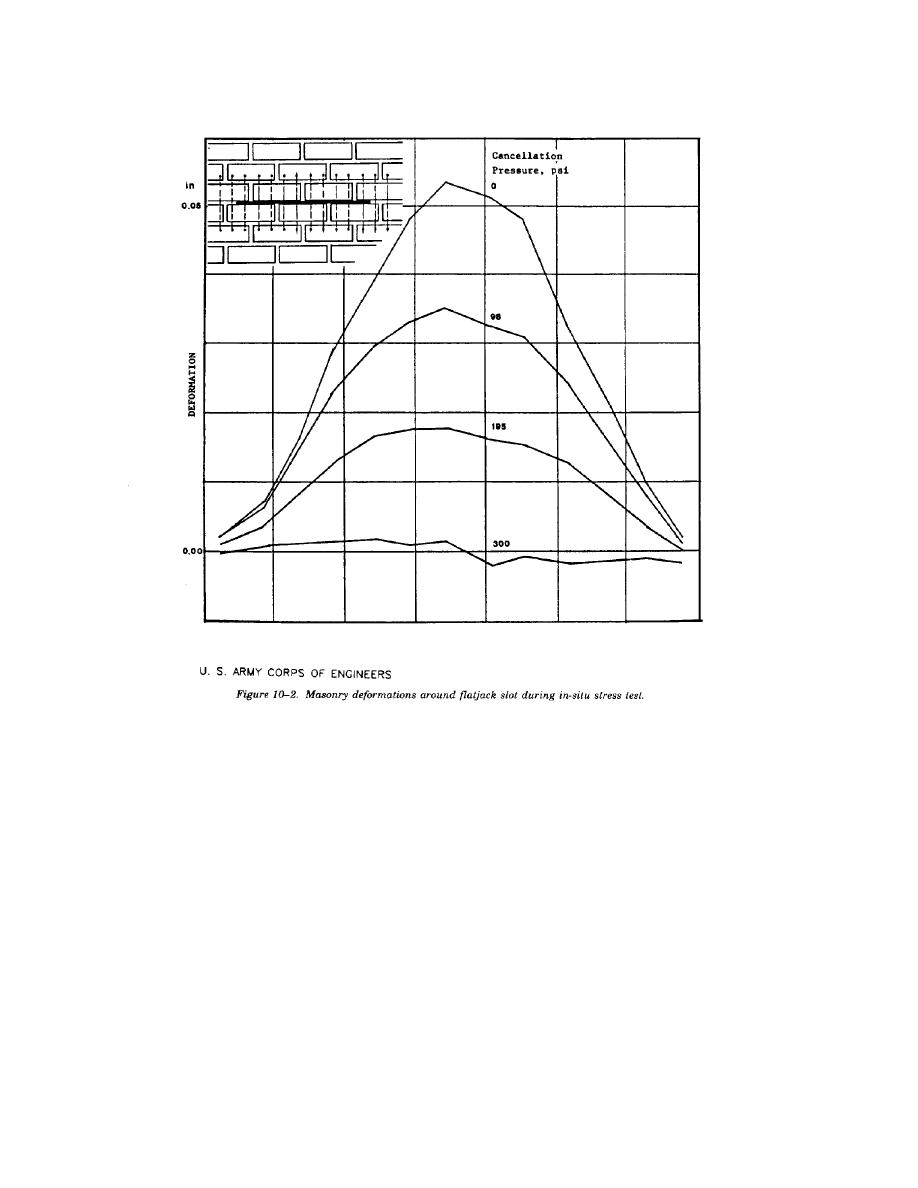
TM 5-809-3/NAVFAC DM-2.9/AFM 88-3, Chap. 3
mortar must be removed by hand or with a drill.
engineering material characteristics needed for
Semicircular jacks are suitable for in-situ stress
structural analysis and evaluation. It does not rely
measurement but are not suitable for deformation
upon correlation to laboratory tests. The in-situ
measurements in the two-flatjack test. Instead,
stress test provides a direct measure of the vertical
rectangular or semi-rectangular flatjacks with a
stress at a point in a structure-thus gives an
length equal to or greater than that of two masonry
indication of the factor of safety of the structure in
units should be used. An accurate, removable dial
terms of compressive failure. The measurement of
gauge is needed for measurement of displacements
in-situ stress also provides a gauge of the accuracy
or, in the case of the two-flatjack test, electronic
of structural analyses in predicting the effects of
deformation measuring devices may be used. Other
gravity loads. The in-situ deformability test yields
equipment required for the flatjack test includes a
a direct measure of the compression modulus which
diamond-bladed masonry saw or a hand drill to
can be used for calculation of deflections, or for
form the slot at the chosen location, a hydraulic
use during structural analysis. It may also be
pump, flexible high pressure hoses, and a calibrated
possible, in certain cases, to estimate masonry
pressure gauge.
compressive strength from an in-situ deformability
(4) Application. Flatjack tests are among
test. The flatjack tests are not strictly NDE tests,
the most useful and informative NDE tests
since they do require the removal of a portion of a
available for determining masonry structural
mortar joint. However, this damage is easily re-
properties. Unlike other NDE tests, the flatjack test
paired by simply repointing mortar into the slot,
provides a direct physical measurement of the
leaving no visible trace of the test. The flatjack test
10-4


 Previous Page
Previous Page
